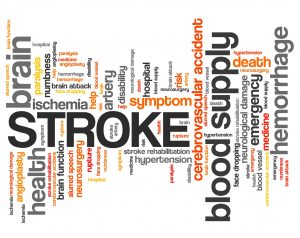This website uses cookies so that we can provide you with the best user experience possible. Cookie information is stored in your browser and performs functions such as recognising you when you return to our website and helping our team to understand which sections of the website you find most interesting and useful.

Susan E. Mazer, Ph.D. Blog
Thoughts and ideas on healthcare
Hi, and welcome to my blog! I'm Susan E. Mazer -- a knowledge expert and thought leader on how the environment of care impacts the patient experience. Topics I write about include safety, satisfaction, hospital noise, nursing, care at the bedside, and much more.
When the Healthcare System Has a Stroke
September 2, 2016
Not sure you heard, but one of the arteries in the heart of the U.S. healthcare system collapsed. Yup, a stroke. Blockages abound; both brain and heart. In addition, the system suffers from obesity and malnutrition.
Aetna is ending its participation in the state exchanges leaving millions abandoned without insurance, and with few options. Aetna is the largest insurer, but not the only one to exit the insurance exchanges.
Their reason? “Too many sick people.”
Well, although this is a direct quote, this may be too simplistic. Nonetheless, “too many sick people” is always the big worry for insurance companies and for providers who suffer from patients who are sicker and from reduced insurance reimbursements.
Continuing Struggle Impacts Everyone
I thought of not writing about this, as insurance companies sit outside of my core interest in the patient experience. However, the continuing struggle to heal a system that suffers impacts every patient, nurse, doctor, and community.
If we look at the U.S. healthcare system as if it were a person, we might tell it to change careers, to eat less high-calorie expenses, and to focus on the balance between the energy it takes in and that which it spends. We might try to convince it to break some very bad habits of binge eating expensive and rich procedures and drugs.
We might also look at its back pain and suggest that it has not practiced stretching exercises so that it is more flexible. We might also warn it of suffering from being malnourished by not using its resources to the betterment of its own life.
Still, nurses and physicians care for patients, worry about the critically ill, and do what is needed at the bedside. No matter what. Emergency rooms operate 24-hours a day.
Life-sustaining efforts being extended to a system that can no longer function in ways that are healthy should be questioned to see if rehabilitation is possible. The best patients, families, nurses, physicians, and providers each know that to heal the system we must heal ourselves.
Healing a Chronically Ill System
Being healthy means that we realize that we are the key to our own health. Realistically, we either do or don’t do what is good for us, and when we seek help, we either follow what is suggested or we pay the price. This is also the key to a chronically ill system. The system is overburdened with the results of what we do not do on our own behalf!
The real test, however, is how we help those that cannot do this on their own. That is who the system exists for. If we fail them, the system has no purpose at all.
When our health system has a stroke, its recovery is based on returning to the integrity, wholeness, and mission that started it. Its rehabilitation includes stretching the muscles of the public good, ridding the body of toxins, and feeding it nutritious, energizing foods. Otherwise, it will experience paralysis and be unable to do what it is meant to do – just like us.
The question of whether or not to exist or provide healthcare services cannot be based on if too many people are sick. It must be driven by wanting all of us to be well, to thrive and to flourish, and by sharing the responsibility for making this happen.
P.S. If you like this post, please do me a favor and share on LinkedIn, Twitter, Facebook, etc. Also to get automatic notices when a new post is published, subscribe (upper right). No spam – just great content. Thanks!











